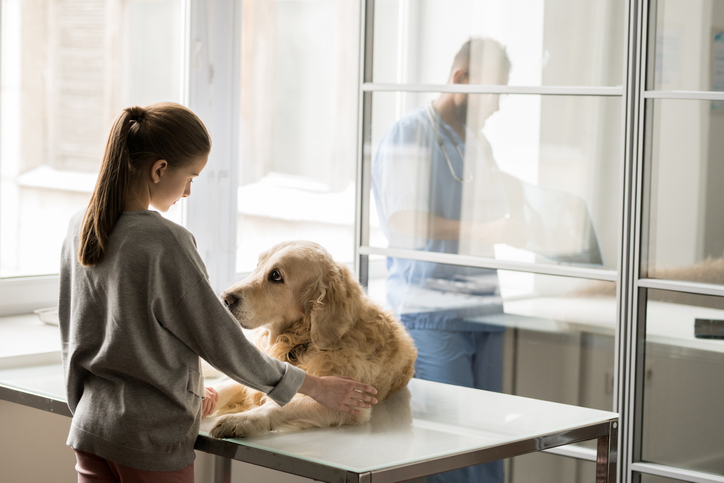The euthanasia appointment calls for empathy
Rituals allow us to honour the memory and regain some control over a situation we have no control over

In veterinary medicine, euthanasia appointments are among the most complex and trying, both for staff and clients. Indeed, many receptionists and front-end staff members might find themselves at a loss for words when counselling a client through these initial conversations over the phone.
For the pet owner, it may be the most difficult decision of her life. She is likely overwhelmed by a sense of shame and guilt, and is carrying a significant emotional burden—so much so, she might forget whether her cat is a cat or a dog and how much it weighs. This heightened emotion often leads to confusion and, as such, requires different management and a specialized skillset.
Lead the conversation
When navigating euthanasia appointments, it always helps to practice empathy. Empathy is showing another person you understand what they are facing; it doesn’t mean sharing their pain. It means saying things like, “I know this is not easy for you to take this decision. I will do my best to help you today.”
Call the animal by name. This simple gesture comforts the owner and shows you understand their pet it is more than an animal. Rather, it is an individual, a chapter in their life, and a source of unconditional love and joy.
If you feel the pet owner is becoming overwhelmed, gently guide them back to the conversation and the topic at hand. Ask closed-ended questions that can be answered with a simple “yes” or “no.” Ask, “Is Charlie a dog or a cat?” instead of, “What species is Charlie?”
Break the isolation
To establish a close connection and help a client feel more at ease, consider sharing a story from your own experience. If you have ever lost a pet, do not hesitate to share this with the pet owner—say, “I am sorry you are facing this” and, “I understand this is difficult.” This openness will make the person feel safer and less judged.
Offer a pre-euthanasia consultation
Given euthanasia is a big decision, it is no surprise there any many aspects in need of discussion. A pre-euthanasia consultation provides a safe space where families can ask questions and a member of the veterinary team can explain the procedure, address aftercare options, ask for special requests, and tactfully discuss the cost. This conversation is helpful in ensuring the family of the pet is at peace with their decision.
Do not itemize costs
While price transparency is important, it is not necessary to specifically outline each individual charge for a euthanasia appointment. Rather, include sedation, euthanasia, and cremation as one service in the client’s invoice and adapt otherwise. A purpose-built body bag for transportation can be included in your services, as 85 per cent of pet owners find plastic bags are not an acceptable option.1
Leave the choice
While many pet owners feel pressured to be present throughout the euthanasia, this is not always necessary or recommended. Reassure the client that it is acceptable and understandable if they do not want to be in the room for the procedure. Tell them their pet will not be alone and, if they prefer, they can choose to come into the room once the euthanasia is done to say goodbye. This is often the preferred solution when children are present—they can draw a picture of their pet during the euthanasia and come back once it is over.
Offer at-home euthanasia
If a pet has mobility issues or is highly anxious, an at-home euthanasia may be preferred; however, many families do not know this option exists. If a pet owner is interested in this and your facility does not offer it, it may be best to refer the client to a mobile service. The owner will be grateful for the offer and, in turn, will be more likely to return to you for future pet care needs.
Offer a ritual
Rituals allow us to honour the memory and regain some control over a situation we have no control over. Encourage clients to mark a pet’s crossing of the Rainbow Bridge with something meaningful, be it a drawing, a ceremony, a letter, or a picture. Rituals bring closure and make the family feel they will continue to be with their pet.
Céline Leheurteux, DVM, is founder and CEO of Euthabag, the original purpose-built body bag for companion animals. Dr. Leheurteux, a Québec-based practitioner, shares her best tips on euthanasia via the Small Animal Euthanasia Practical classes, free RACE-approved training built to reduce stress and improve compassion satisfaction in veterinary teams. For more information, visit veterinaryeuthanasiaeducation.com and euthabag.ca.
Reference
1 Cooney, K, Koghan L, Brooks S, Ellis C. Pet Owners’ Expectations for Pet End-of-Life Support and After-Death Body Care: Exploration and Practical Applications, 2020. Topics in Companion An Med 43 (2020) 100503. https://www.sciencedirect.com/science/article/pii/S193897362030101X


